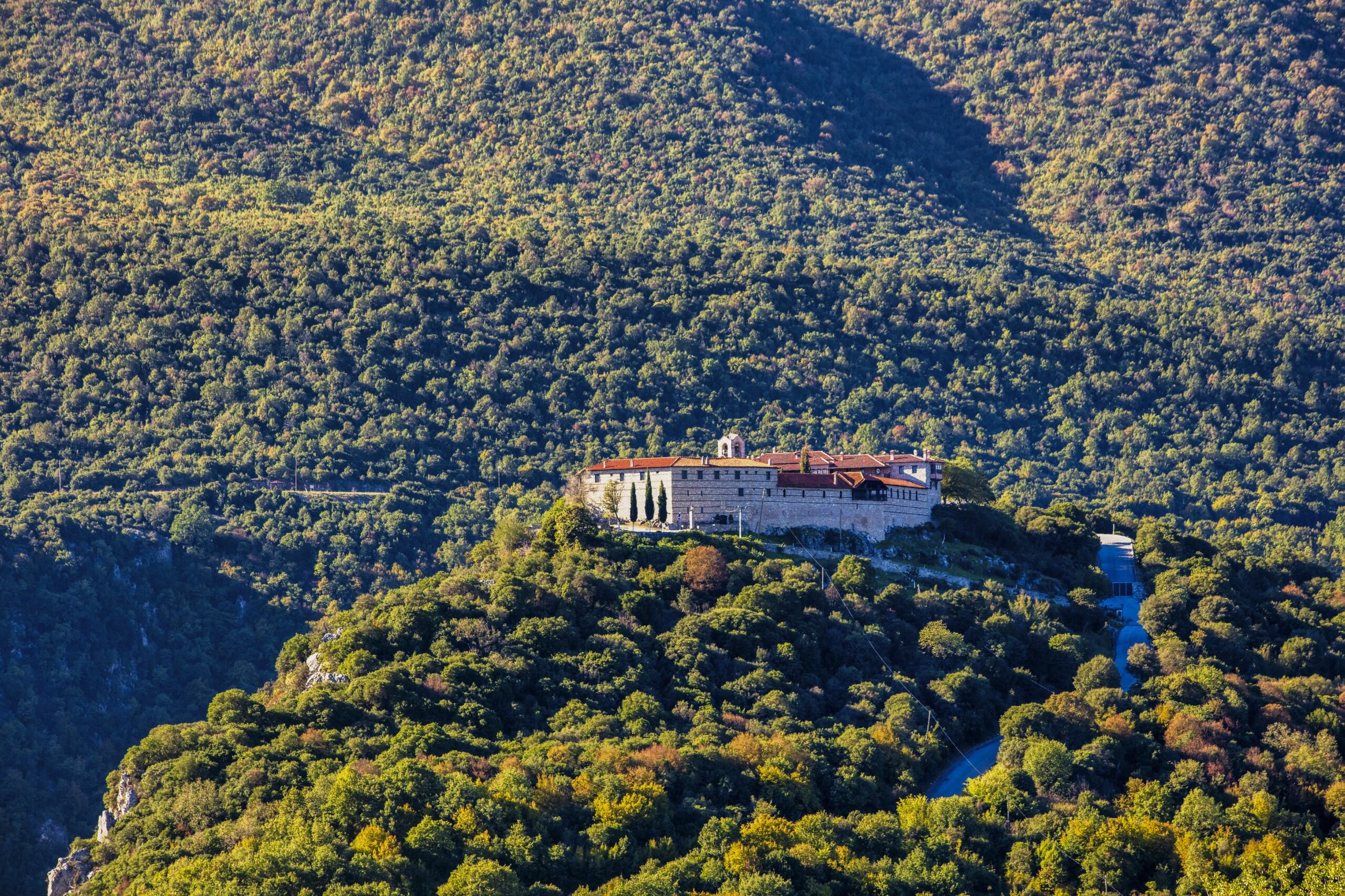Holy Monastery of the Dormition of the Theotokos (Kimiseos Theotokou) in Spilaio

Within the Rock of Faith: The Monastery of Spilaio as a Guardian of Tradition
The Holy Monastery of the Dormition of the Theotokos at Spilaio, in the region of Grevena, is a historical and spiritual landmark nestled at the northeastern entrance of the village of Spilaio, at an altitude of 960 meters. It was founded in 1633 by Archbishop Gavriil, a native of Milia in Metsovo, as indicated by the engraved dedicatory inscription carved in stone. Initially under the jurisdiction of the Archdiocese of Ohrid, the monastery came under the aegis of the Ecumenical Patriarchate after 1767. During the Ottoman period, the monastery played a significant role in both education and the local liberation struggles. In 1935, it was administratively merged with the Holy Monastery of Zavorda, ensuring the continuation of its historical legacy.
Of the original monastic complex, the katholikon and a section of the northern wing of the cells have been preserved. The main church follows the Mount Athos architectural type of a cross-in-square church with four columns (tetrakionion), a dome, and lateral apses. A unique feature is the narrow tripartite narthex—an unusual element that distinguishes it from the broader narthex typical of such churches. The addition of an extra pair of piers on the western side forms an exonarthex, giving the church a distinctive architectural identity. The masonry reflects the Byzantine tradition, incorporating influences from the architecture of Epirus and the Pindus mountains. Key architectural elements such as the sanctuary apses and the drum of the dome are built using finely dressed porous stones and bricks, creating blind decorative arcades.
Inside, the church is adorned with exquisite post-Byzantine frescoes. In 1650, the iconographers Nikolaos and Ioannis painted the main sanctuary, the dome, and the apses. In 1658, the painters Michail of Zerma (Epirus) and Elias of Eptachori (Kastoria) completed the remaining frescoes. The exonarthex was painted later, in 1911, by the iconographer Georgios Pitenis from Samarina. Additionally, the 17th-century carved wooden iconostasis, richly gilded and intricately decorated, along with the church doors and windows, are exceptional examples of woodcarving craftsmanship.
The Holy Monastery of the Dormition of the Theotokos at Spilaio stands as a monument of cultural heritage, where Byzantine tradition harmoniously blends with local folk artistry. Its rich history, unique architecture, and artistic treasures make it one of the most important destinations for those seeking to explore the spiritual and cultural depth of Western Macedonia.
Information
Holy Monastery of the Dormition of the Theotokos, Spilaio, Grevena, GR-51100
Phones: +302462025403 (Ephorate of Antiquities of Grevena), +302462022404 (Holy Metropolis of Grevena)
Highlights
• The Katholikon (Main Church) of 1633. A remarkable example of post-Byzantine ecclesiastical architecture featuring a dome, side apses, and distinctive masonry that reflects both Epirus and Pindus building traditions. The 17th-century gilded wooden iconostasis is especially noteworthy.
• The Frescoes. The interior is richly decorated with frescoes painted in distinct phases: in 1650 by Nikolaos and Ioannis; in 1658 by Michail of Zerma and Elias of Eptachori; and in 1911, the exonarthex was painted by Georgios Pitenis from Samarina.
• The Bell Tower. A striking three-storey bell tower built in 1910 dominates the monastic courtyard.
• The Monastic Landscape. Perched at 960 meters in the lush natural surroundings of the Pindus range, the monastery offers breathtaking views of the Venetikos River Gorge. The tranquil setting is ideal for both pilgrimage and nature-oriented visits.